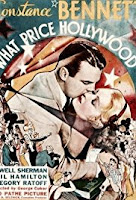November 11, 2018
 |
| Wilfred Owen |
One century ago today, World War I ended. Germany had been defeated and signed a surrender. All combatants agreed that the Armistice would commence on the eleventh hour of the eleventh day of the eleventh month of 1918.
I'm not sure the 11-11-11 symbolism was helpful. Once an agreement had been reached, why not lay down arms immediately? There were telegraph wires to send messages rapidly by then, and at least a few more soldiers and civilians might have survived if the order had gone out immediately. As it was, 17 million persons, military and civilian, already had died.
Meanwhile, in England, church bells were ringing to celebrate the end of fighting when a telegram was delivered to the Shrewsbury home of Thomas and Susan Owen. Its message was that their son, Wilfred, had been killed in France just one week earlier, cut down by machine gun fire as he led troops across a canal in Ors. He was just 25.
Like the telegraph, the machine gun was a newish innovation. More than 50 years earlier, during the American Civil War, the first multiple-shot weapon, the Gatling gun, was introduced by the North. By World War I, Germany had refined the idea and in 1917 introduced a machine gun that could spit out 600 bullets a minute. One of those bullets killed Wilfred Owen.
Another innovation of the war was the armored tank, deployed first by the British in the Battle of Somme in 1916 and soon afterward by the German army. In 1915, the Germans began lobbing chlorine gas during battles; the English responded with gas attacks of their own. The most deadly gas, mustard gas, was introduced by German forces in 1917; it too was taken up by the English.
Owen, a tutor and teacher, had been fighting in the British army since 1915. After more than two years at the front, he was sent back to England to be treated for for "shell shock," which we now would call PTSD. During that period he wrote war poems that reflected his disillusionment and anger. He left these behind when he returned to the battlefield in July 1918. They were published in book form in 1920.
Owen had read his classics: Homer's "Iliad," the history/poem about theTrojan War and Horace's odes about the internal battles between the assassination of Julius Caesar and the transformation of the Roman republic into the Roman Empire.
The Romans built their influence with wars of conquest, and Horace was a sort of court poet who was expected to glorify heroism and even death in battle.
World War I wasn't that kind of war, however, and Wilfred Owen's most famous poem laid out the differences.
One Horatian line that Owen borrowed was this: "Dulce et decorum est pro patria mori," which translates as "It is sweet and honorable to die for one's country." Owen had seen too much. He called that notion "The old Lie."
Here is the poem itself.
Dulce et Decorum Est
Bent double, like old beggars under sacks,
Knock-kneed, coughing like hags, we cursed through sludge,
Till on the haunting flares we turned our backs,
And towards our distant rest began to trudge.
Men marched asleep. Many had lost their boots,
But limped on, blood-shod. All went lame, all blind;
Drunk with fatigue; deaf even to the hoots
Of gas-shells dropping softly behind.
Gas! GAS! Quick, boys! - An ecstasy of fumbling
Fitting the clumsy helmets just in time,
But someone still was yelling out and stumbling
And flound'ring like a man in fire or lime.-
Dim through the misty panes and thick green light,
As under a green sea, I saw him drowning.
In all my dreams before my helpless sight
He plunges at me, guttering, choking, drowning.
If in some smothering dreams, you too could pace
Behind the wagon that we flung him in,
And watch the white eyes writhing in his face,
His hanging face, like a devil's sick of sin,
If you could hear, at every jolt, the blood
Come gargling from the froth-corrupted lungs
Obscene as cancer, bitter as the cud
Of vile, incurable sores on innocent tongues,-
My friend, you would not tell with such high zest
To children ardent for some desperate glory,
The old Lie: Dulce et decorum est
Pro patria mori.
This poem is strong for its complex structure, for its imagery and for its unflinching description of a soldier's death throes following a mustard gas attack.
Another artist, painter John Singer Sargent, visited a World War I battlefield and observed soldiers who had been blinded by mustard gas at a treatment station. From this experience, he made this painting, "Gassed," which was completed in March 1919.
The painting is huge, more than 20 feet long, which suggests how strongly Sargent took its subject. Later, when he was commissioned to do group portraits of British commanders and and statesmen, those paintings were smaller.
So that was the war: A triumph of military innovations and the death of millions, remembered in art but without a meaning understandable to the men who fought or to their loved ones.
World War I was known for several decades as the War to End all Wars and the Great War. Then, in 1939, came World War II, which was distinguished by more deaths, deadlier weapons and not so much art.






